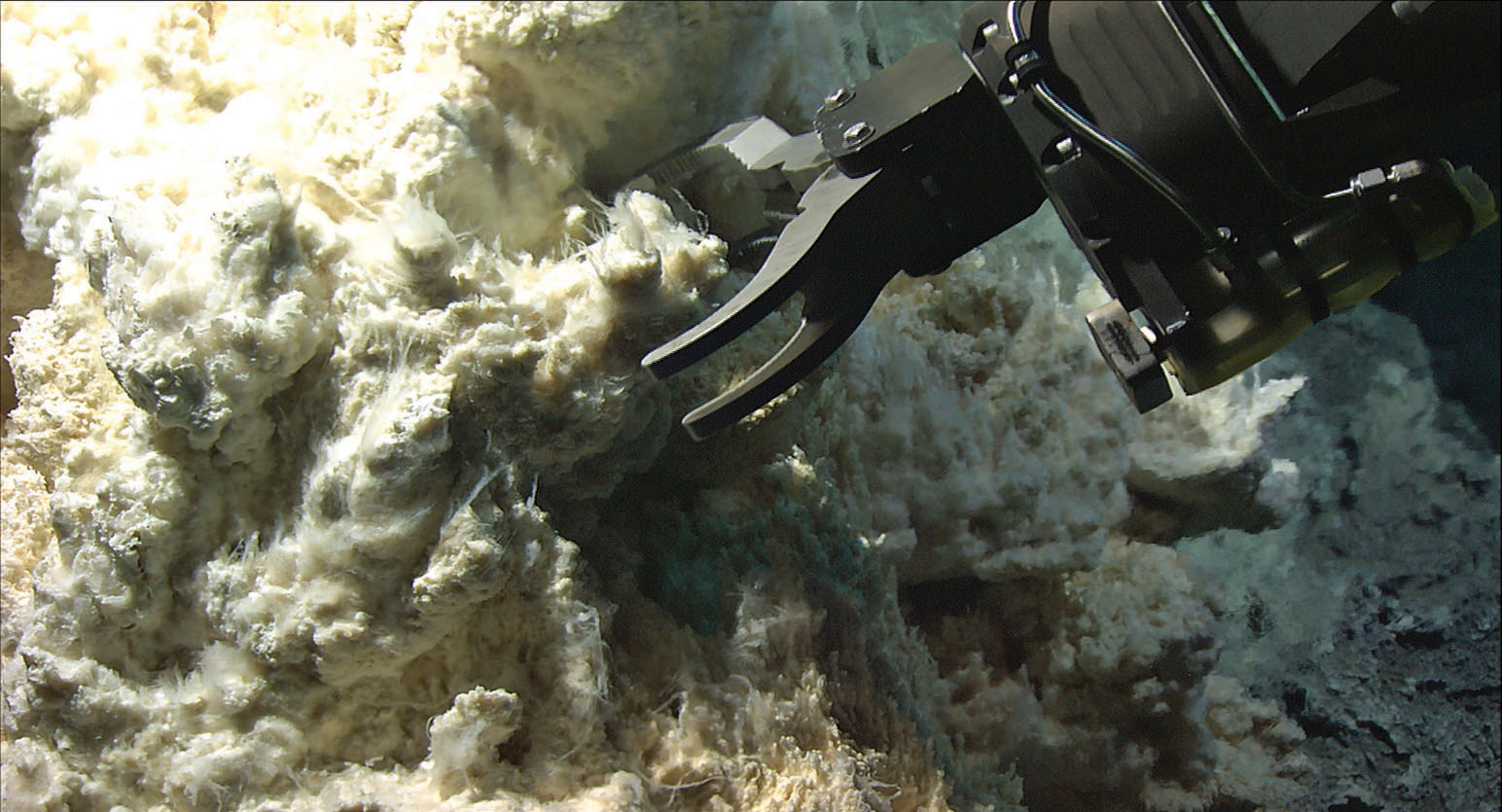Lost City: Where Life Began?
In-Class Activity
Click here to access Use Your Knowledge Activity: Extraterrestrial specifically designed for chapter 18.
In its early days, more than 4 billion years ago, Earth was mostly warm ocean, and its atmosphere lacked significant oxygen. Photosynthetic organisms did not exist, so there were no living things to harness the energy of sunlight to make organic molecules. Such conditions pose a conundrum for those who study the origin of life. With no photosynthetic organisms to make organic molecules, where did the energy and building blocks necessary to assemble living things come from? Lost City provides an important clue.

The hydrothermal vents at Lost City are driven by a geochemical process called serpentinization, which occurs any time a particular type of rock from Earth’s mantle comes in contact with seawater. The rocks are exposed as a result of faulting and uplift of the seafloor. The reaction itself generates a lot of heat, releases hydrogen gas, and—when this hydrogen reacts with carbon from rocks or seawater—produces hydrocarbons such as methane and simple organic molecules. All this happens completely abiotically—that is, without the participation of living things. Such an environment would have been an ideal place for life to begin, says Brazelton, of the University of Washington. “You have energy and organic compounds and liquid water all in a warm spot, so that’s a great place where you might imagine life could have got started.”
Lost City may also help to explain the chicken-and-egg problem posed by the origin of life: organic molecules are needed to build living things, but living things are generally the source of organic molecules. So which came first, the chicken or the egg? “I think a big clue to the chicken-and-egg problem is that you don’t need life to make organic compounds,” says Brazelton. “We are studying environments right now where the organic compounds are literally pouring out of these chimneys, and they’re being made without the help of life” (INFOGRAPHIC 18.8).
Many prokaryotes thrive in the seemingly inhospitable environment at Lost City. Abiotic reactions at Lost City generate energy-rich and carbon-containing molecules that can sustain the organisms at Lost City. These reactions may be similar to ones that supported life on the early Earth.


Many microbiologists would agree that deep-sea vents like Lost City likely represent some of the oldest habitats for microbial life on Earth. Radiometric dating of the rock layers indicates that Lost City’s vents have been pumping strong for at least 100,000 years, and likely for much longer: Lost City sits on a layer of Earth’s crust that is at least 1.5 million years old. Back then, rocks from the interior of Earth—from the mantle—were much closer to the surface than they are now, which means their reaction with seawater would have been more common. A journey to Lost City is thus like a journey back in time, to Earth’s primordial past.
Lost City may even provide a clue to life beyond Earth. The rocks involved in serpentinization are quite common in the solar system. They are all over the surface of Mars, for example, and researchers suspect that the chemical reaction might be occurring right now beneath the surface of Mars, where recent evidence suggests that methane is being produced. NASA is therefore extremely interested in Lost City as a way to understand potential life on Mars (see Chapter 2).
Ironically, scientists know more about the surface of Mars than they do about the ocean floor of our own planet. Ocean covers 70% of Earth’s surface, yet much of it remains unexplored. If Lost City is any indication, many scientific treasures await the patient explorer. “[Lost City] is a good example of what we really don’t know and what there is to still discover on the seafloor,” says geologist Früh-Green.
If life on Earth did begin at hydrothermal vents like those at Lost City, then it could mean that these extreme-loving prokaryotes are the descendants of the most ancient form of life on Earth. For nearly 2 billion years, these earliest prokaryotic organisms reigned supreme, with no challengers. Not until photosynthetic prokaryotes evolved, some 2.5 billion years ago, did they meet their match. Then, in an instant, geologically speaking, life on our planet underwent a radical and unprecedented change: 2 billion years ago, one of these early prokaryotes engulfed another and the two cells began a symbiotic relationship. That was the birth of the first eukaryote. 